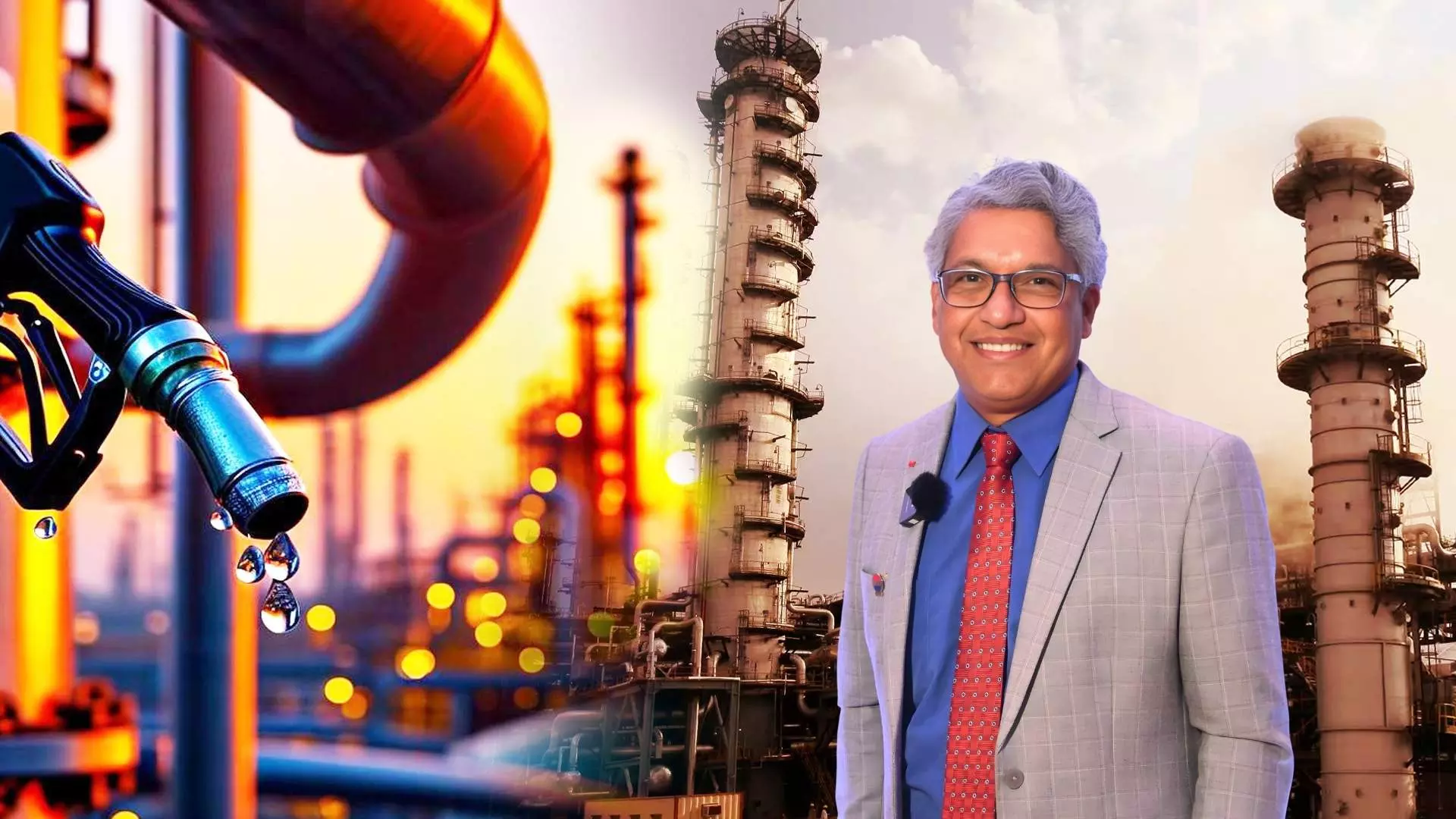
Sustainability and growth go hand in hand, says CPCL MD H Shankar
CPCL chief outlines company’s roadmap to achieve net-zero emissions by 2046, from green hydrogen to flexible crude sourcing

H Shankar, Managing Director of Chennai Petroleum Corporation Limited (CPCL), spoke to The Federal about the company’s sustainability initiatives, emission control measures, circular economy practices, and its evolving energy strategy amid global geopolitical challenges. Edited excerpts:
CPCL aims for net-zero emissions by 2046. How much progress has been made so far, and what’s the next milestone?
Our net-zero target is set for 2046, aligned with our parent company Indian Oil Corporation. We’ve already charted a detailed roadmap and estimated the capital expenditure required to meet it.
The first step in this journey is energy conservation, which has already delivered substantial reductions in fuel and energy losses. Over the past two years, CPCL has been rated among Quartile One in the Solomon Index a benchmarking system for global oil companies placing us in the top tier for energy efficiency.
Our energy intensity index is very low, and we continue to introduce new conservation measures to further reduce it. Alongside these efforts, we are advancing initiatives in green hydrogen to support our long-term sustainability goals.
Also read: Centre to unveil Sustainable Aviation Fuel policy to cut oil imports, boost green jobs
How is CPCL integrating circular economy ideas like waste reuse and water recovery into refinery modernization?
Water management has been a key focus for us. Over the last two years, we’ve reduced our water footprint by 20 per cent through improved operational efficiency. Our treatment and desalination plants have become significantly more efficient, thanks to continuous technology upgrades.
We’re committed to bringing our water usage down even further as part of our circular economy approach.
Refineries often face pollution concerns. What steps is CPCL taking to cut emissions and ensure transparency with local communities?
CPCL has operated in the Manali region for over 60 years. When the refinery was first built, it was far from the city. However, urbanization has now brought residential areas closer to our boundaries.
As a responsible corporate entity, we have installed world-class emission control systems and real-time stack monitoring. All emission data is shared live with the Tamil Nadu Pollution Control Board (TNPCB), ensuring complete transparency and accountability.
We remain deeply committed to protecting the environment and maintaining community trust.
Also read: Centre to unveil Sustainable Aviation Fuel policy to cut oil imports, boost green jobs
With US President Donald Trump warning India against importing Russian crude, how could this impact CPCL’s operations or sourcing strategy?
Our crude oil requirements are fully met by our parent company, Indian Oil Corporation, which gives us a strong strategic advantage. IOCL operates on a large scale, securing better deals than any single refinery could.
CPCL also maintains operational flexibility. We can process over 160 different grades of crude. Recently, we processed new crude varieties from West Africa, the USA, and the Middle East, all with encouraging results.
This flexibility ensures that even if one source is disrupted, we can seamlessly switch to another without affecting operations.
CPCL embraced sustainability decades before it became mainstream. Was it driven by vision or necessity?
Sustainability has been part of CPCL’s DNA since inception. When our first refinery was commissioned in 1969, we already had a Sulphur Recovery Unit in place.
Over the years, every expansion has included sustainability investments from setting up a sewage reclamation plant in the 1980s to building a desalination plant later.
For the past 20 years, CPCL has operated without drawing a single drop of groundwater. All our water comes from reclaimed sewage and desalination a model of sustainable industrial practice.
Also read: How refining boom masks India’s falling crude and gas production
What would you say to industries that still view sustainability as an expense rather than an investment?
Sustainability should never be treated as a cost. It must be built into the design stage of every growth plan.
For example, in our next expansion, instead of setting up a captive power plant, we are switching to green grid power. This approach ensures that sustainability and profitability reinforce each other.
Growth and sustainability are not separate goals; they work together. When designed right, sustainability drives innovation, efficiency, and long-term value creation for both the company and society.
(The content above has been transcribed using a fine-tuned AI model. To ensure accuracy, quality, and editorial integrity, we employ a Human-In-The-Loop (HITL) process. While AI assists in creating the initial draft, our experienced editorial team carefully reviews, edits, and refines the content before publication. At The Federal, we combine the efficiency of AI with the expertise of human editors to deliver reliable and insightful journalism.)

